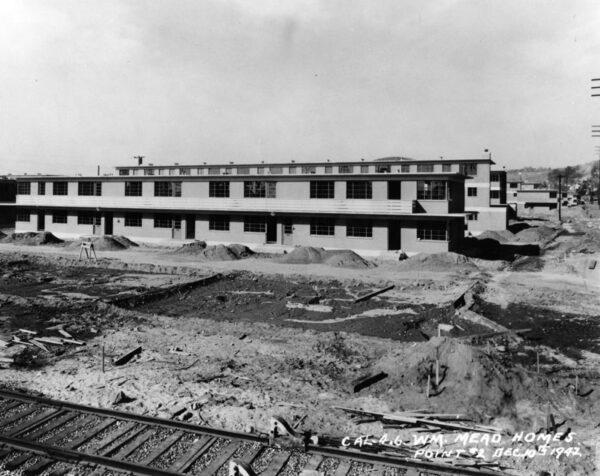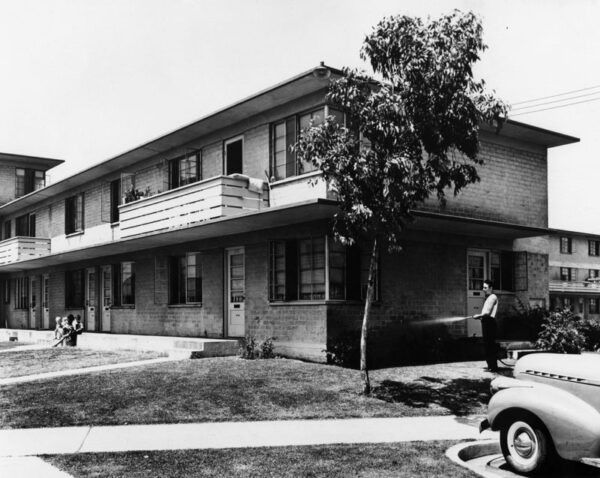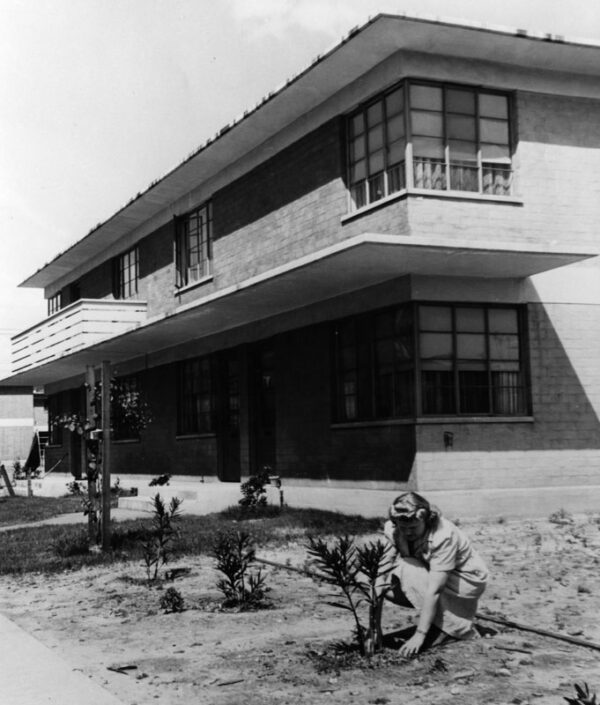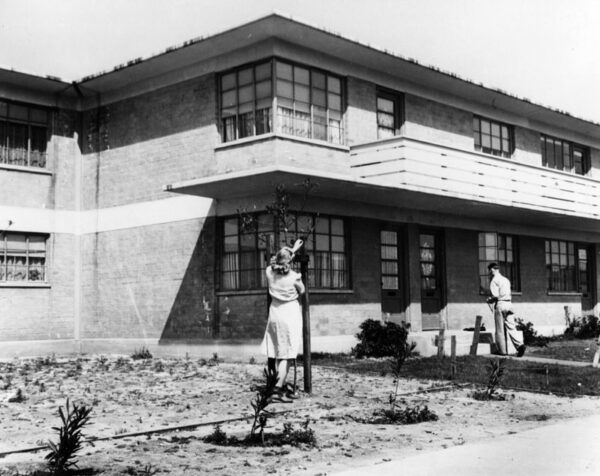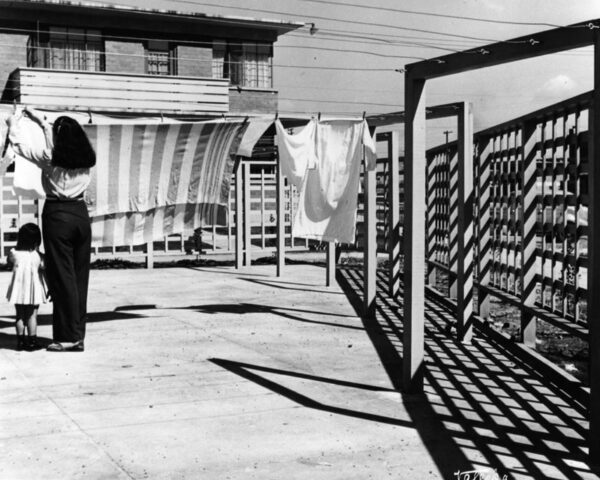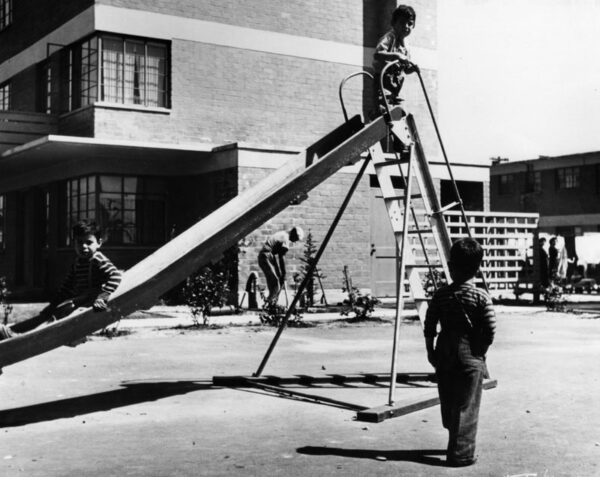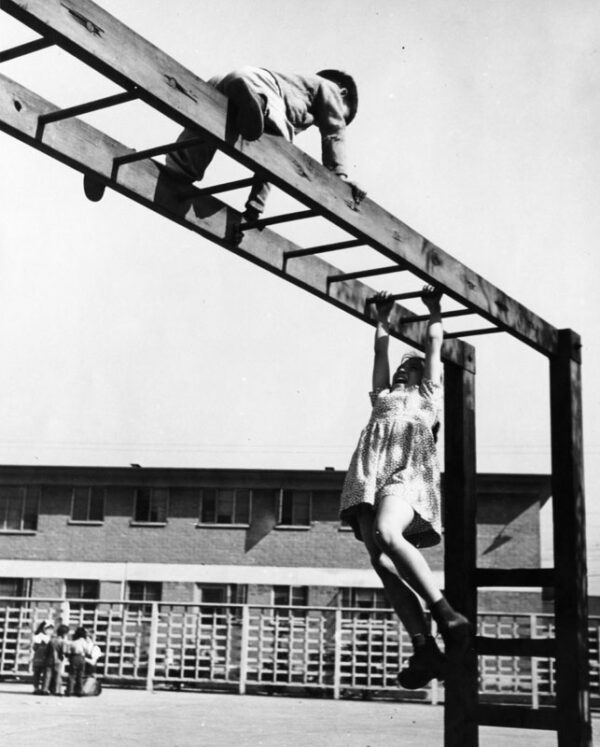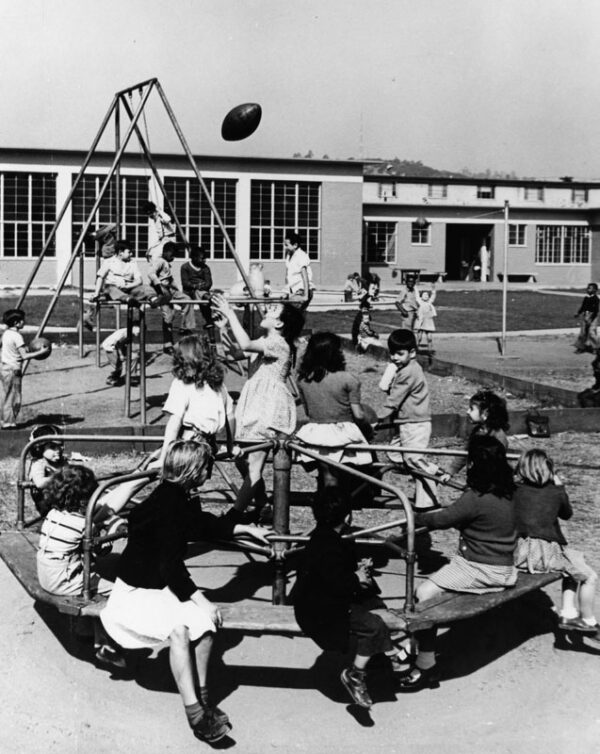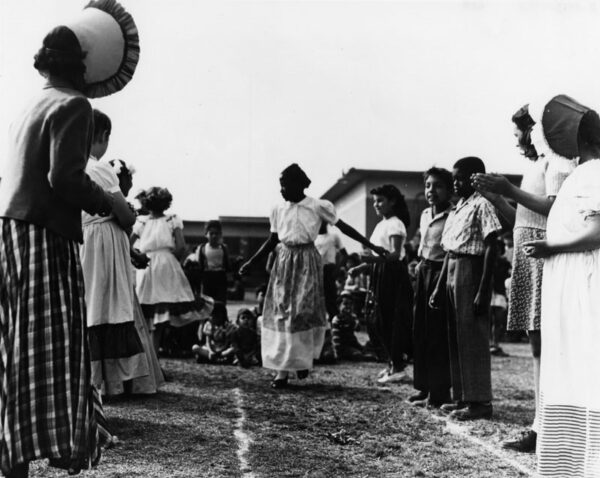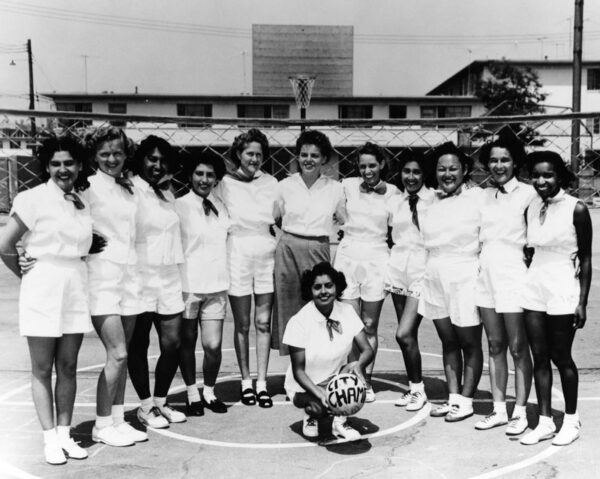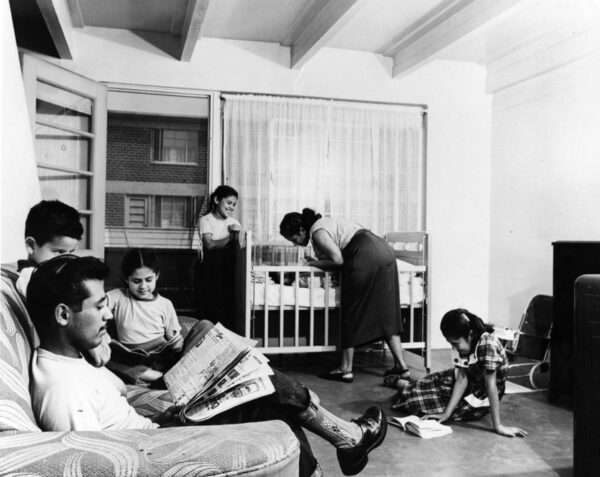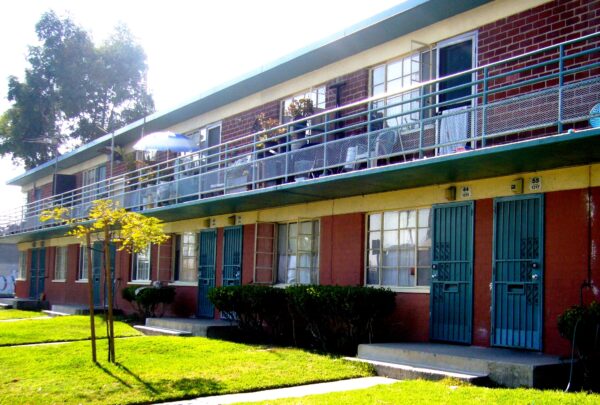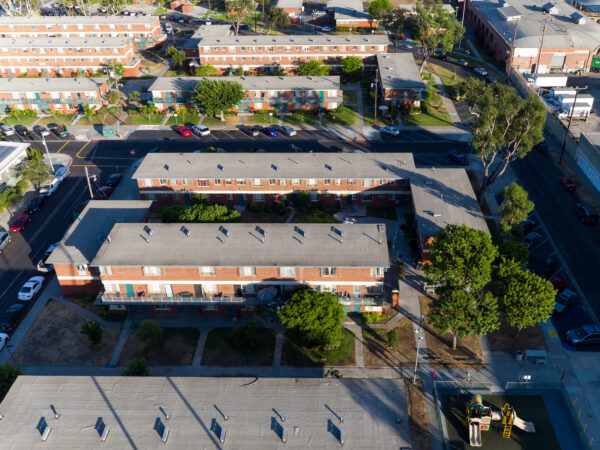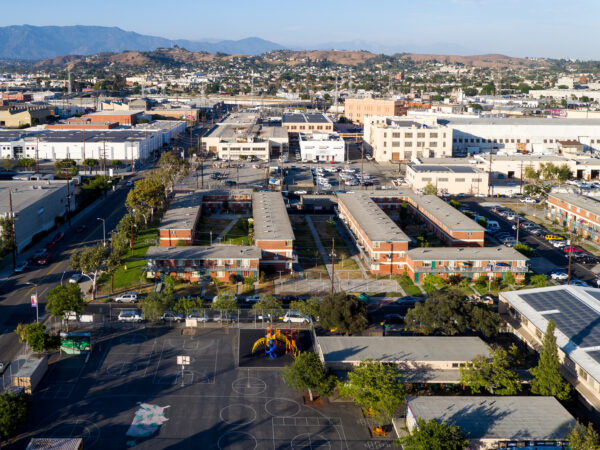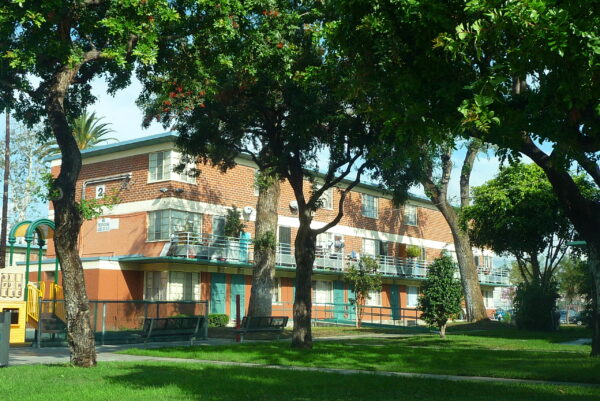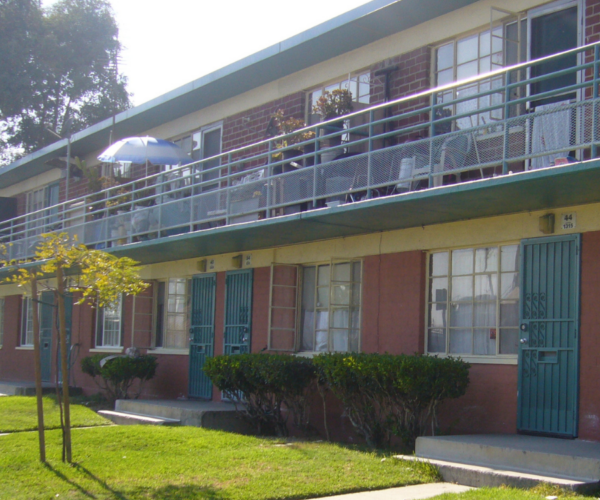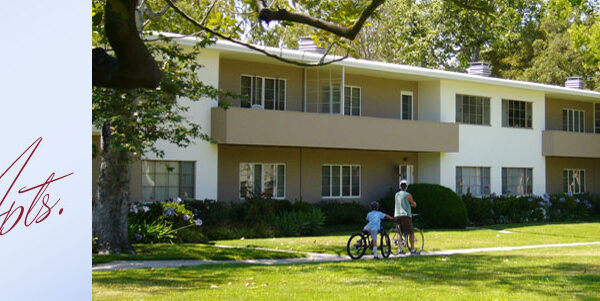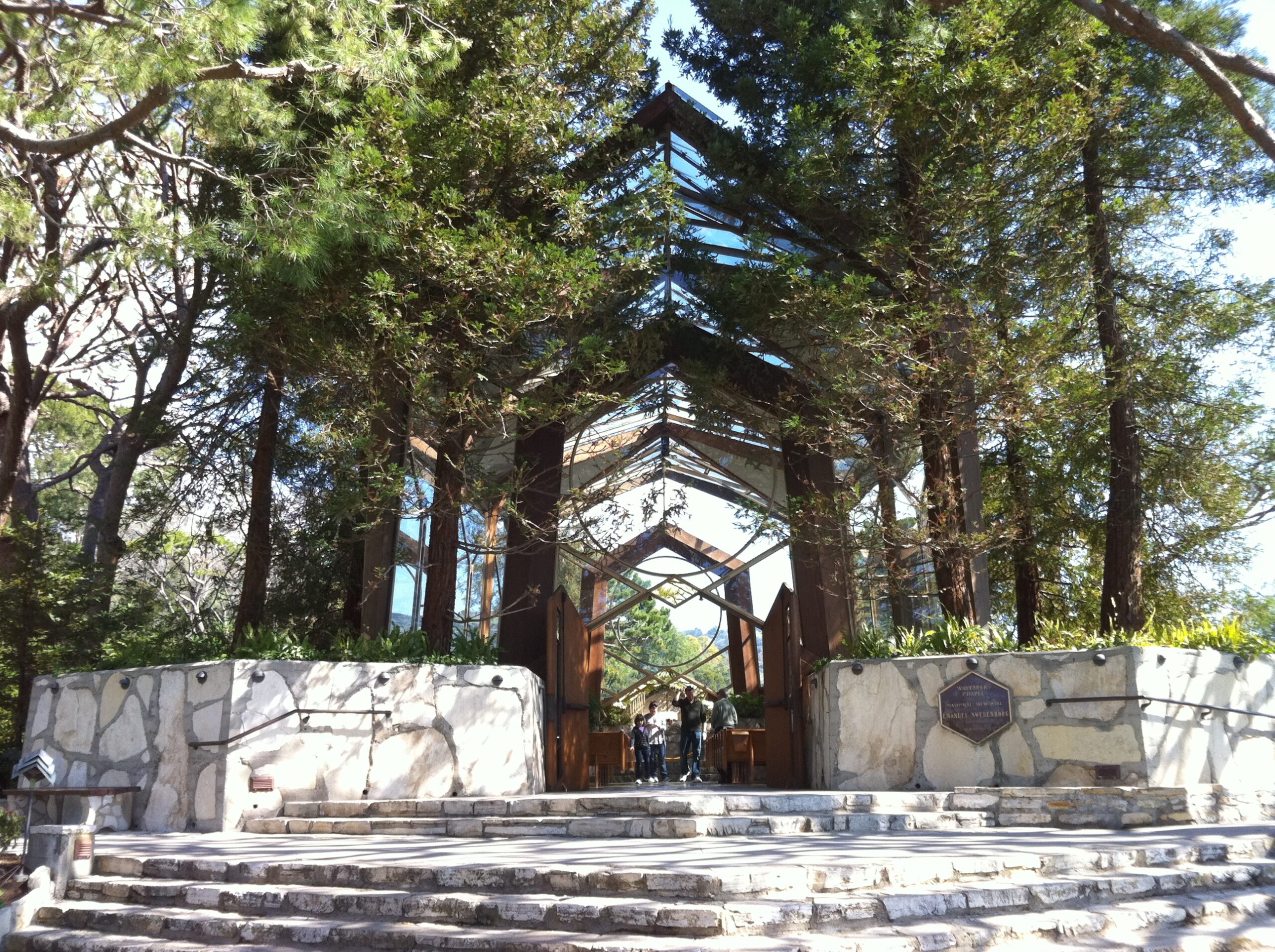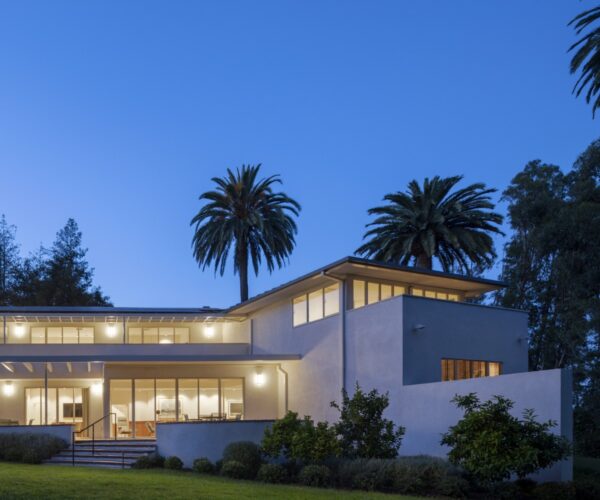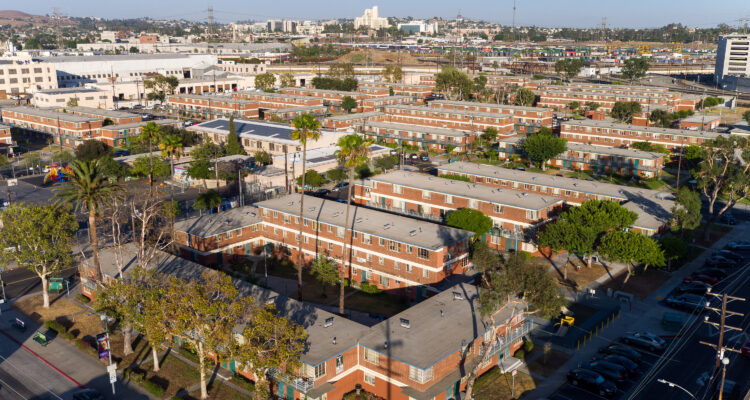
Place
William Mead Homes
One of many local garden apartments built for low-income Angelenos, William Mead Homes still provides a thoughtfully designed living experience today.
Place Details
Address
Get directions
Property Type
Community
The William Mead Homes public housing development was the eighth project built by the Housing Authority of the City of Los Angeles (HACLA). It was one of many local garden apartments built as a result of the 1937 Housing Act. This act provided for subsidies from the federal government to local public housing agencies to improve living conditions for low-income families.
William Mead Homes contains a combination of two- and three-story Modern garden apartments on a fifteen-acre property. The buildings are organized into five blocks that largely adhere to the pattern of the surrounding street grid.
The three-story buildings are arranged in rows parallel to Main Street, with the two-story buildings intersecting at right angles. This arrangement creates a series of sheltered, semi-private courtyard spaces throughout the complex.
The buildings are set back from the streets by strips of lawn, with paved walkways leading to each unit. An elementary school occupies an entire block centrally located along the Main Street frontage of the housing complex.
This garden apartment development is a remarkably intact example of a modern property type that continues to provide a thoughtfully designed living experience today, just as it did during World War II.
